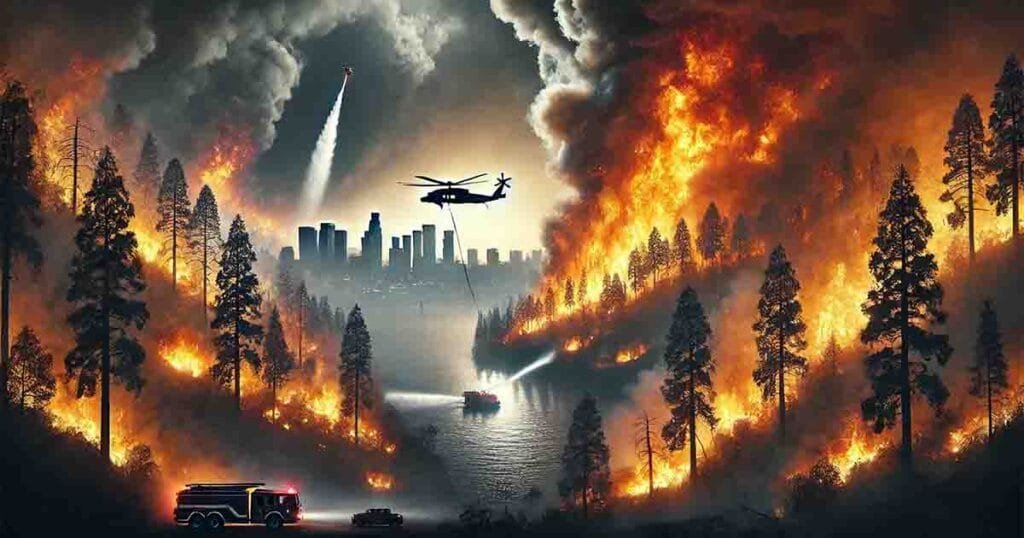- Palisades Fire scorches over 20,000 acres in Los Angeles County by January 11, 2025.
- Evacuations ordered for over 50,000 residents as fire spreads rapidly.
- High winds and dry conditions hinder firefighting efforts, with red flag warnings in effect.
- Environmental concerns include increased landslide risks and ecosystem damage.
- Estimated economic losses exceed $10 billion, with widespread property destruction.
- Death toll reaches 15 as of January 11, 2025.
California’s relentless fire season has begun 2025 with a catastrophic event. The Palisades Fire, which erupted in Los Angeles County, has scorched over 20,000 acres as of January 11, leaving a trail of destruction in its wake. Officials have confirmed 15 fatalities, making it one of the deadliest fires in the region’s recent history.
The fire has forced the evacuation of over 50,000 residents, with Pacific Palisades, Brentwood, and parts of Santa Monica bearing the brunt of the devastation. Emergency response teams have described the situation as “unprecedented,” citing extreme weather conditions as a major factor in the fire’s rapid expansion.
High winds, with gusts reaching up to 45 mph, combined with parched vegetation, have created a perfect storm for this disaster. Los Angeles Fire Department Chief Gregory Sanders warned, “This fire is moving at an alarming rate, and containment remains a significant challenge. Residents must adhere to evacuation orders to ensure their safety.”
A red flag warning remains in effect, with meteorologists predicting even stronger winds in the coming days. The harsh conditions have severely hampered containment efforts, despite the deployment of over 5,000 firefighters, supported by aerial water-dropping operations.
Impact and Strain on Resources
The scale of the disaster has overwhelmed emergency services and shelters. Thousands of evacuees are now seeking refuge in temporary accommodations, with many facing uncertainty about the fate of their homes.
Maria Gonzalez, a Brentwood resident, shared her harrowing experience: “We left with nothing but our essentials. Watching the flames approach was terrifying, and now, all we can do is wait and hope for the best.”
Governor Gavin Newsom has declared a state of emergency and appealed for federal assistance. Additional resources are being mobilized, but simultaneous smaller fires in the region have stretched firefighting capacities thin.
The environmental consequences of the Palisades Fire are expected to be long-lasting. Experts warn of heightened landslide risks in the Santa Monica Mountains as winter rains approach, potentially compounding the disaster’s impact. The fire has also devastated local ecosystems, threatening wildlife habitats and biodiversity in the area.
Economically, the fire’s toll is staggering. Preliminary estimates peg the damage at over $10 billion, including property losses, firefighting expenses, and disruptions to local businesses. Insurance companies are bracing for a surge in claims as residents assess the destruction.
A Wake-Up Call for California
The Palisades Fire serves as a stark reminder of California’s growing vulnerability to wildfires fueled by climate change and urban sprawl. Calls for systemic changes to fire prevention strategies and infrastructure resilience are growing louder.
As firefighting efforts continue, residents are urged to stay informed and prioritize their safety. The tragedy underscores the urgent need for long-term solutions to address the state’s increasingly devastating fire seasons.


